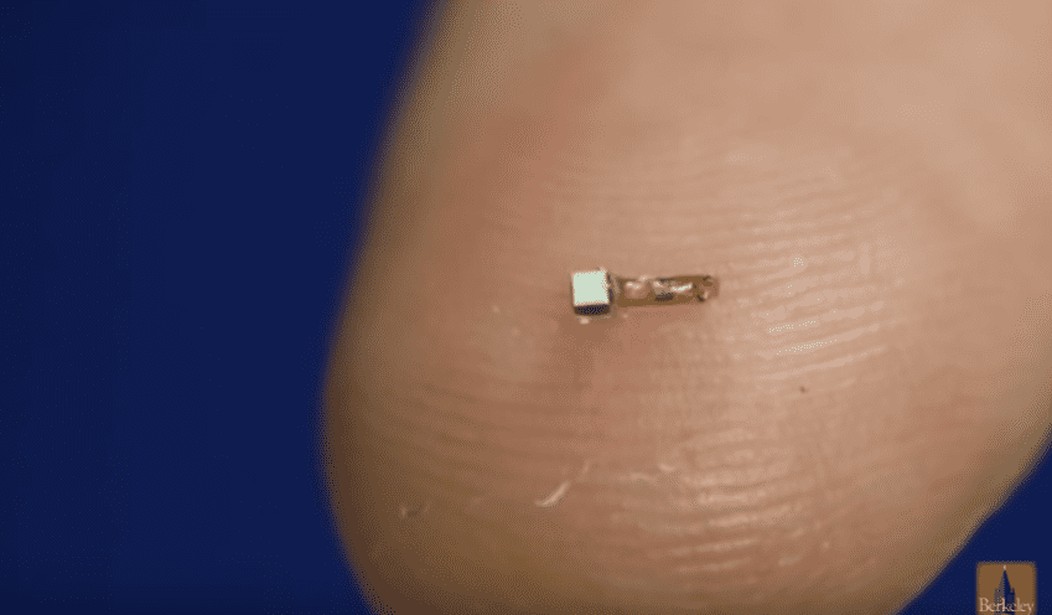Monitoring your heart rate and VO2 max (maximum oxygen volume) with the latest fitness tracker is nifty, but researchers are developing new, tiny tech to keep track of just about any organ, nerve or muscle in real time. If that’s not futuristic-cyborg-cool enough for you, the so-called “neural dust” could also be used to stimulate nerves and muscles, ushering in a new era of “electroceutical” treatment for things like epilepsy or inflammation.
Engineers at the University of California, Berkeley, have developed sensors that are about the size of a large grain of sand and use ultrasound to both power the implant and transmit data. Neural-dust implants have successfully been implanted in the muscles and nerves of rats and the researchers hope to create even smaller sensors that could be used in the brain.
“I think the long-term prospects for neural dust are not only within nerves and the brain, but much broader,” said Michel Maharbiz, an UC-Berkeley engineering and computer sciences professor of electrical engineering and co-author of a paper on the new technology in Wednesday’s issue of the journal Neuron. “Having access to in-body telemetry has never been possible because there has been no way to put something super-tiny super-deep. But now I can take a speck of nothing and park it next to a nerve or organ, your [gastrointestinal] tract or a muscle, and read out the data.”
When people say things like “in-body telemetry” I am alternately utterly fascinated and thoroughly freaked out. This, honestly, is my approach to a lot of new technology, like Amazon’s delivery drones.
I love fitness tracking tech. Monitoring my steps has helped me get back on track with my running after a few injury plagued years. A task that is more important and more difficult with age needs requires more motivation to do some days, and the guilt factor when I’m behind on steps for the day is pretty powerful. The thought of not having to worry about whether the monitoring device is charged is intriguing enough. The more detailed and accurate data really gets my attention though.
On the freaked out side, I’m just suspicious enough to be extremely leery of what else they may be able to track.
Back to this neural dust: there is so much upside in the variety of applications (see the video in the original article) that everything about it is exciting.
Until the NSA gets involved, of course.









Join the conversation as a VIP Member